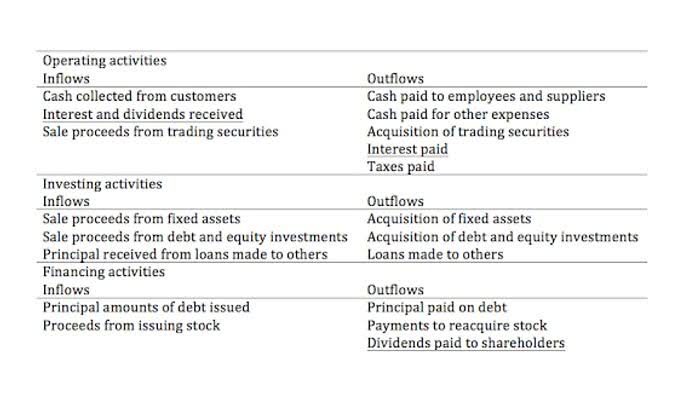Jack decided to apply overhead based on direct labor hours; this is a common choice, but not the only choice. Some other systematic and rational approach could have been developed. Ordinarily, one would try to establish some correlation between the application base and overall cost incurrence.
This completed job cost sheet can be given to management to compare with production estimates and revenues from product. Management can use job cost sheets not only to improve production efficiencies and cut costs, but they can also use these sheet to help estimate product sale prices. For instance, Gibson might see the job cost sheet and realize the job actually cost $4,500 to make, but it only quoted the customer $3,900 initially. Job costing involves the accumulation of the costs of materials, labor, and overhead for a specific job. This approach is an excellent tool for tracing specific costs to individual jobs and examining them to see if the costs can be reduced in later jobs.
- It’s not just catering and construction where it’s important to accurately cost jobs.
- Job costing is commonly used by construction companies, where costs vary widely from job to job.
- This approach is slightly more time-consuming, but is the most theoretically correct method under generally accepted accounting principles.
- In this article, we share 8 practical tips for how to reduce labor costs and improve your profitability.
- The computer files can be queried in many ways and generate more than a simple job cost report.
https://intuit-payroll.org/ing can help managers identify inefficiencies and excess costs that can be addressed by automating work or allocating resources better. Construction job costing is a method of tracking, assigning, and estimating costs on a project-by-project basis. Job costing traditionally includes labor, material, equipment, and other overhead costs. In a true job cost accounting system, a budget is set up in advance of the job. As actual costs are accrued, they are compared to budgeted costs, to determine variances for each phase of each job. Cost Codes are used for each phase, allowing „mini-budgets“ to be generated and tracked.
Step 3. Determine and Allocate the Overhead Rate
In essence, any business that is routinely involved with unique products or projects should be avid users of job costing. A prime example is a construction company, since each building project in which it is engaged is unique. Another possibility is a consulting firm, since it must compile the costs incurred on behalf of each client.
Our software allows managers to plan, manage and track more than costs but every aspect of their budget. Join teams at companies such as Avis, Nestle and Siemens who are using our tool to succeed. To calculate the material costs, all the direct material costs with the indirect material costs. The first step in creating an overhead rate is totaling the company’s overhead costs. My salary, factory rent, factory utilities, machinery repairs, and machinery cleaning supplies all get counted in the overhead calculation.
Such hand-journaling is mandatory for companies that continue to use general accounting software to do what is a 1065 forming. Enlightened accountants are moving forward and using job costing software, thereby improving cost control, reducing risk, and increasing the chance of profitability. A job profitability report is like an overall profit & loss statement for the firm, but is specific to each job number.
Types of business that use job costing system
Overhead costs are the hardest to calculate because they are indirect expenses and can’t be easily divided up by projects. Examples of overhead costs include rent for an office, the cost of equipment, utilities, and manager salaries. The difference between allocated overhead costs derived from the standard costing method is subtracted from the actual cost incurred for the job. The variance from the above is dealt as given in the notes below. In process costing, the cost is determined by the process and the number of products that are produced. The cost calculation for process costing is based on the process, not the job, as in job costing.
Profit Maximization
Business.org’s basic overview explains what job costing is, who it benefits, and how to do it. In this guide we’ll cover the basics of how job costing in Quickbooks Online works, then cover the basics of how to set it all up. Finally we’ll cover how to solve one of the most challenging parts of job costing which is how to track your hourly labor costs accurately whilst minimizing your manual admin burden. In addition to labor, material costs can get out of control quickly.
FAQs on Job Costing
Stay ahead of the game by keeping a comprehensive list of your vendors and frequently running material price comparisons. Performing an analysis that looks into job inefficiencies can help you make changes now that will positively affect your business in the future. This may include reducing the number of employees contracted onto any given job, retraining those who are underperforming, or promoting employees who work more efficiently than others. There are other features to help you stay on budget, such as resource management tools that allow you to keep your team’s workload balanced so they can work at capacity and stay productive. Risk management features allow you to identify risks and track issues until they’re resolved.
As in construction, this allows the company to measure profitability and hit targets for margin. It also allows them to benchmark themselves against the competition to uncover areas that can be improved and make them more competitive. Using job costing in manufacturing also helps plan budgets and operating expenses over the long term. My business uses the traditional overhead allocation method, and I use direct labor hours as the activity driver. My employees worked 320 hours last month, giving me an overhead rate of $23.13 per direct labor hour.
Job costing for construction is much more accurate than process costing. Despite this, many small contractors use process costing because it’s simpler and easier. Between the two, job costing will provide far more accurate estimates. Creating a job cost sheet helps companies stay profitable by taking stock of how much past jobs have cost, allowing business owners to make changes to improve efficiency and reduce costs. Process costing is only used in the case of mass production of a product, determining the unit cost per item.
Want More Helpful Articles About Running a Business?
Job costing is a costing method used to determine the cost of specific jobs, which are performed according to the customer’s specifications. It is a basic costing method which is applicable where work consists of separate projects or contract jobs. Process costing is a simpler, streamlined method of costing a project that is usually used to estimate larger-scale projects. For instance, on average, a roof costs $x to install, but job costing digs deeper into granular costs to provide accurate projections. Calculating job costing for construction begins with breaking down your project costs into specific expenses.
Workyard provides leading workforce management solutions to construction, service, and property maintenance companies of all sizes. There is no attempt to allocate the variance to more than one account. Identifying and reducing costs to your own business by budgeting and making changes can maximize the amount of revenue you take in, affecting the success of your business in the long term. This website is using a security service to protect itself from online attacks.



